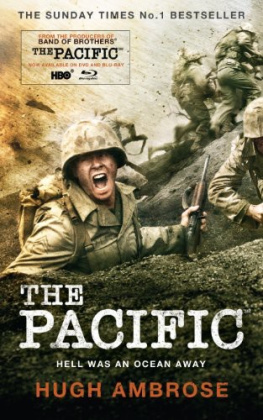by Stephen E. Ambrose
Introduction
This book is the result of some 24 interviews, conducted between September and December, 1983, in Canada, England, France and Germany. At that time I had just completed some twenty years of work on Dwight Eisenhower, during which period I examined something over two million documents. In my next book I wanted to work from an entirely different kind of source material. I have always been impressed by the work of the American military writer S. L. A. Marshall, especially by his use of post-combat interviews to determine what actually happened on the battlefield.
My thought was, Why not do a post-combat interview forty years after the event? Even taking into account all the tricks that memory plays, I felt that for many of the participants, D-Day was the great day of their lives, stamped forever in their memories. I knew that was the case with Eisenhower, who went on to two full terms as President, but who always looked back on D-Day as his greatest day, and could remember the most surprising details. I also wanted to come down from the dizzying heights of the Supreme Commander and the President to the company level, where the action is. Further, I wanted a company that was unusual and that played a crucial role, Pegasus Bridge was an obvious choice.
So I set out. My recorded interviews with John Howard took twenty hours, spread over a period of some weeks. I got almost ten hours of tape from Jim Wallwork. My shortest interview was two hours.
Listening to the old veterans was fascinating. D-Day had indeed burned itself indelibly into their minds, and they very much enjoyed having an interested audience for their stories.
My major problem, it turned out, was the sequence and timing of events: I sometimes got six, eight, or ten individual descriptions of the same incident. When the veterans differed it was only in small detail, but they often disagreed on when the specific incident took place, whether before this one or after that one. By comparing all the transcripts later, by using such documentary material as exists, and by constant re-checking with my sources, I worked out a sequence of events and incidents that is, I think, as close to accurate as one can get forty years later.
The key time, on which everything else hinges, is the moment the first glider crashed. I use 0016, D-Day, as that moment. That was the time at which John Howard's watch, and the watch of one of the privates, both stopped - presumably as a result of the crash.
When I began writing the book I quickly realised that the more these men and women spoke for themselves, the better. I found myself using more and longer quotations than I had ever used before. Gradually, I realised that what I was doing was putting their stories into a single narrative, rather than writing my own book. Because this is, truly, a book written by the veterans themselves, I'm glad to say that the royalties are going to the Royal Greenjackets Consolidated Charitable Fund (the Oxfordshire and Buckinghamshire Light Infantry became the 1st Battalion of the Royal Greenjackets in the late 1950s) and the Airborne Forces Security Fund).
The informants (listed in the order the interviews were done)
Jim Wallwork, John Howard, Wally Parr, Dennis Fox, Richard Todd, Nigel Poett, Nigel Taylor, M. Thornton, Oliver Boland, C. Hooper, E. Tappenden, Henry Hickman and Billy Gray (a joint interview), David Wood, John Vaughan, R. Ambrose, Jack Bailey, Joy Howard, Irene Parr, R. Smith, H. Sweeney, E. O'Donnell, Therese Gondree, and Hans von Luck.
Prologue
SPRING, 1944
The spring of 1944 was a unique time in European history, unique because virtually every European was anticipating a momentous event. That event was the Allied invasion, and everyone knew that it would decide whether the continent lived under Nazi domination.
By May of that year the war had reached its decisive phase, a phase in which invasion was inevitable. The British had been planning to return to Europe since they were kicked off in 1940. The Russians had been demanding the opening of a second front since the June of 1941, insisting that the Germans could never be beaten without one. And the Americans had been in agreement with the Russians since their entry into the war. Generals George Marshall and Dwight D. Elsenhower had argued forcefully for a second front in 1942 and 1943.
Despite the commitment by the three great allies, and despite intense public pressure, another strategy was followed. In November, 1942, the Allies landed in French North Africa, a long way from any major German forces (not to mention from any German cities). In July of the following year they landed in Sicily, and two months later in southern Italy. These operations ran into heavy German opposition, but they did not put a significant strain on enemy manpower. Nor did they seriously weaken Germany's capacity to make war: indeed, German factories were producing tanks and guns at record rates by the spring of 1944. And their guns and tanks were the best in the world - as well they might be, given the Nazis' ability to draw on the expertise and resources of all Europe. In short, the Allied operations in the Mediterranean during 1942 and 1943 were more important for their political than their military results. They left Hitler with few problems either of production or of manpower.
But Hitler did have one major worry in the Spring of 1944, and that was a single point at which his fighting forces were vulnerable. He was well protected on the north, where his troops occupied Norway and Denmark. To the south, the immense barrier of the Alps stood between Germany and the Allied forces, who in any case were still south of Rome. Hitler was not even excessively worried about his eastern flank: his armies were 600 miles east of Warsaw, and within 300 miles of Moscow. He had lost the Ukraine in 1943, much his biggest loss to date, but for compensation he had held on in the Balkans and was still besieging Leningrad. On all fronts except one he had a deep buffer between himself and his enemies. That one exception was to the west.
The Allied forces building up in the United Kingdom, now 2,500,000 strong, were the greatest threat to Cologne and Germany's industrial heartland. Not only were they much closer than the Red Army, they were operating from a virtually impregnable base and had far greater mobility than either the German or Russian armies. But of course there was the English Channel between Hitler's Europe and the armies gathering in the United Kingdom. Hitler knew, from intensive study of the plans for operation Sea Lion, a German invasion of Britain in 1940, just how difficult a cross-Channel attack would be.
Hitler did what he could to make it even more difficult. Just as the British started thinking about returning to the Continent even as they were leaving Dunkirk, so did Hitler begin thinking then of how to repulse an invasion. First the ports were fortified, protected by big guns on the cliffs, by machine-gun emplacements, by trenches, by mine fields and barbed wire, by underwater obstacles, by every device known to German engineers. The Canadians learned how effective these were at Dieppe in August, 1942, when they were met by a veritable wall of steel hurtling down on them from every direction. In 1943, the Germans began extending the fortifications up and down the coast; in January, 1944, with Rommel's arrival to take command of Army Group B, construction reached an almost frenzied pace. The Germans knew that the second front had to come that spring, and that throwing the invaders back was their single best chance to win the war.
Hitler had therefore turned a staggering amount of labour and material, taken from all over Europe, to the construction of the Atlantic Wall. All along the French and Belgian coasts, but especially between Ostend and Cherbourg, the Germans had built or were building machine-gun pillboxes, trenches, observation posts, artillery emplacements, fortresses, mine fields, flooded fields, underwater obstacles of every conceivable type, a communications network. This was a regular Maginot Line, only much longer - truly a gigantic undertaking unprecedented in Western history, and comparable only to the Great Wall of China.














